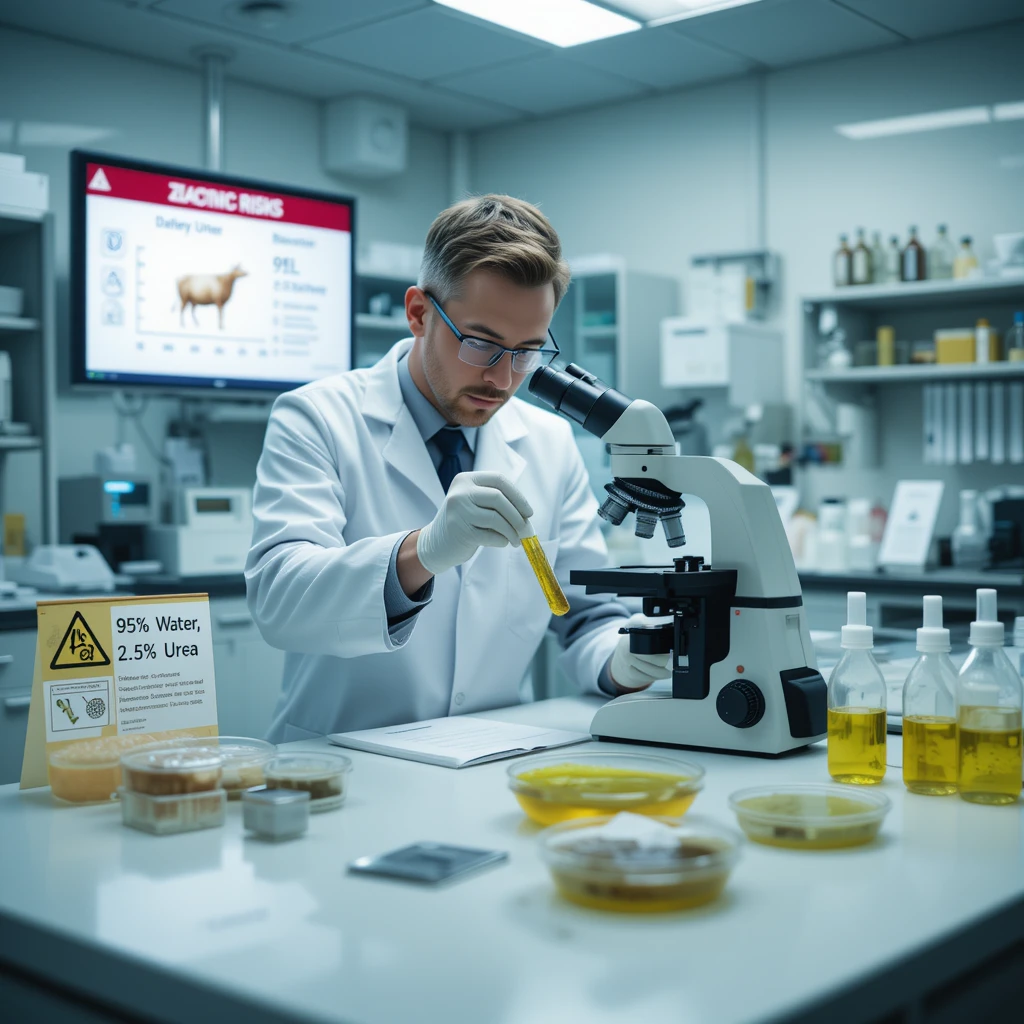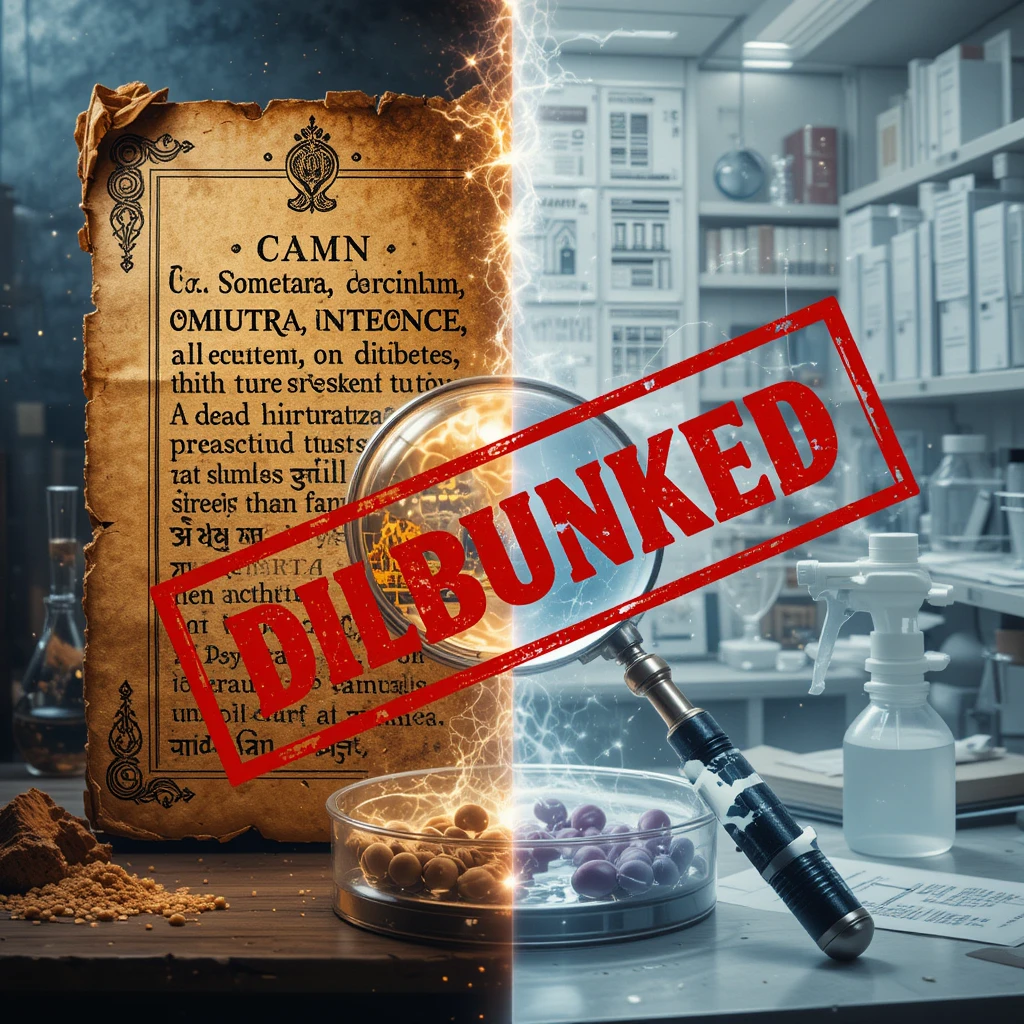Introduction to the Cow Urine Phenomenon
Cow urine, known as “gomutra” in Sanskrit, holds a significant place in traditional Indian practices, particularly within Ayurveda and Hindu rituals. Ancient texts like the Charaka Samhita and Sushruta Samhita describe it as a “rasayana” (rejuvenator) for treating ailments from skin disorders to chronic diseases. Its cultural reverence extends to Zoroastrianism and echoes in historical uses across civilizations like ancient Egypt. Today, gomutra is marketed as distilled “ark” or in formulations like Panchgavya (a blend of cow urine, dung, milk, curd, and ghee), with proponents claiming it cures cancer, fights infections, regulates diabetes, and boosts immunity. These claims have gained traction online, amplified by social media, viral videos, and endorsements from figures like Bollywood actor Akshay Kumar, who admitted to drinking it daily, and political groups promoting traditional Indian remedies.

Table of Contents
As of July 30, 2025, claims of a surging market for gomutra in the United States have emerged, with anecdotes suggesting it’s sold as a wellness tonic for $15 per bottle. This narrative aligns with the global rise of alternative medicine, where Indian exports like yoga and turmeric have found mainstream appeal. However, scientific scrutiny reveals a stark contrast: most medicinal claims lack robust evidence, and studies highlight significant health risks, including bacterial contamination and zoonotic diseases. High-profile endorsements, such as those from IIT Madras Director V. Kamakoti in 2025, were debunked for misrepresenting low-quality studies [source: Alt News fact-check, 2025]. This article provides a comprehensive, evidence-based analysis to debunk these myths, drawing from peer-reviewed research, expert opinions, and trade data. it examines market trends, consumer profiles, and scientific findings, emphasizing the dangers of pseudoscience while respecting cultural contexts.
The global interest in gomutra, particularly in the US, remains niche, with limited evidence of widespread adoption. Online platforms like Etsy and eBay offer small bottles for $4-8, primarily for the Indian diaspora, while regulatory bodies like the FDA scrutinize unproven health claims. By dissecting myths with rigorous methodology, this piece aims to inform readers and promote evidence-based health decisions.
Examining Claims of a US Market Boom
Social media platforms like X amplify stories of gomutra’s rising popularity in America, with posts claiming bottles are sold in stores as an “energizing” drink for $15 [source: X post, July 2025]. These narratives frame gomutra as part of the wellness trend, alongside kombucha or herbal supplements. However, X searches reveal a mix of satire and skepticism, with users questioning its appeal or mocking cultural stereotypes [source: X sentiment analysis, 2025]. Reddit threads similarly dismiss it as “pseudoscience” or a “health risk,” citing its composition of 95% water and 2.5% urea [source: Reddit discussions, 2024].

To verify these claims, trade data offers clarity. India’s cow product exports are growing, but primarily for dung-based fertilizers, reaching Rs 400 crore in FY 2023-24, with the US importing for agricultural use [source: Economic Times, 2024]. Cow urine is not distinctly tracked in databases like Volza or Seair Exim, suggesting minimal volumes [source: Volza trade data, 2024; Seair Exim, 2024]. US Customs Service reports occasional interceptions of cow dung but rarely urine, due to biosecurity concerns like foot-and-mouth disease [source: US Customs Service, 2023]. Online marketplaces list products like “Sacred Cow Urine” on Etsy ($4-8) or “IMC Herbal Gomutra” on eBay, targeting niche buyers, not mainstream markets [source: Etsy listings, 2025].
India’s domestic cow urine industry, led by Patanjali Ayurved, is valued at $1 billion, processing over 5,000 liters daily into ark sold for Rs 40-150 per liter [source: Business Standard, 2024]. Government initiatives under AYUSH promote it, but global trade projections (e.g., OECD-FAO) show no significant urine export growth, unlike spices ($4 billion annually) [source: OECD-FAO Agricultural Outlook, 2024]. Regulatory hurdles, including FDA restrictions on unverified health claims and USDA limits on animal products, further constrain imports [source: USDA trade regulations, 2024]. The claim of a US market boom is thus overstated, confined to small-scale sales for cultural or experimental use.
Profiling Consumers and Their Motivations
Gomutra’s US consumers are primarily the 4+ million Indian-American diaspora, who use it for religious rituals or Ayurvedic remedies, viewing it as “amrita” (nectar) for purification [source: Pew Research on Indian-American demographics, 2023]. A smaller group includes wellness enthusiasts, inspired by urine therapy advocates like John W. Armstrong, who claim benefits for detoxification or skin health [source: Reddit alternative medicine forums, 2024]. Celebrity endorsements, such as Akshay Kumar’s, fuel curiosity but face global ridicule [source: BBC News, 2020].

Motivations vary: spiritual (Hindu reverence), health (alternative to pharmaceuticals), or environmental (organic farming aid). X posts highlight diaspora debates, with some citing US patents as validation [source: X user posts, 2025]. Critics, including health experts, warn of bacterial risks, viewing it as exoticism [source: Telegraph health review, 2023]. In contrast, Arab nations use it agriculturally without health claims [source: Emirates News Agency, 2024]. Adoption remains niche, driven by tradition, not evidence.
Scientific Analysis: Composition and Safety Concerns
Cow urine’s composition—95% water, 2.5% urea, with minerals, hormones, and enzymes—underpins many medicinal claims, attributing benefits to urea (antimicrobial) or uric acid (antioxidant) [source: NCBI chemical analysis, 2020]. However, real-world samples vary, often containing pathogens. While Ayurvedic texts deem it safe, modern studies contradict this.
A 2023 study by the Indian Veterinary Research Institute (IVRI) analyzed 73 samples, identifying 14 harmful bacteria, including E. coli, linked to stomach infections. Methods included bacterial culturing and statistical analysis, concluding fresh urine is unfit for human consumption [source: IVRI report, 2023; The Wire, 2023]. Distilled versions reduce risks but may lose purported active compounds [source: IVRI follow-up study, 2024]. High doses in animal studies caused convulsions, respiratory depression, and death [source: Toxicology Journal, 1975]. Human risks include zoonotic diseases like leptospirosis and multidrug-resistant (MDR) bacterial infections [source: WHO zoonotic disease report, 2022]. NASA’s 1971 analysis labeled urine as waste, with no therapeutic value [source: NASA urine composition study, 1971]. Prion disease risks further complicate safety [source: CDC prion disease guidelines, 2023]. Experts like Dr. Ramanan Laxminarayan assert harms outweigh unproven benefits [source: Indian Express, 2023].

Debunking Medicinal Myths: A Comprehensive Rebuttal
Anticancer Claims: No Credible Evidence
The claim that gomutra cures or prevents cancer, promoted by figures like Pragya Thakur, is widely circulated [source: India Today, 2019]. A 2010 Indian survey reported symptom relief in cancer patients over 8 days, but lacked controls, randomization, or long-term data [source: Journal of Ayurveda, 2010]. In vitro and animal studies suggest antioxidant effects reducing tumor incidence in mice, but these are not translatable to humans due to physiological differences [source: PMC review, 2015]. US patents (e.g., No. 6,410,059, 2002) cover bioenhancers boosting drugs like taxol, not standalone cures [source: USPTO database, 2002].
Fact-checks of 2025 IIT Madras claims revealed misrepresented papers, often low-quality in vitro studies or lacking human trials [source: Alt News, 2025]. Oncologists, including Dr. Radhakrishnan, assert no evidence supports cancer treatment; it’s a “waste product” that risks delaying proven therapies [source: The Hindu, 2023]. Analogous camel urine studies show no benefits and potential harm in cancer patients [source: Saudi Medical Journal, 2019]. Wikipedia and Skeptics forums highlight zero robust evidence, with positive claims biased or anecdotal [source: Wikipedia, 2025; Stack Exchange Skeptics, 2024]. Debunked: The anticancer myth relies on cultural enthusiasm, not science, and could endanger lives by diverting patients from effective treatments.

Antimicrobial and Antifungal Claims: Overstated and Risky
Proponents claim gomutra rivals antibiotics like gentamycin against bacteria (E. coli) and antifungals like amphotericin B (Candida) [source: Journal of Ethnopharmacology, 2018]. In vitro disc diffusion tests show some activity, particularly from Red Sindhi breed urine, but results vary by preparation [source: PMC antimicrobial study, 2015; Red Sindhi study, 2020]. A 2015 PMC review suggested bioenhancer effects, boosting antibiotics 2-7 fold [source: PMC review, 2015].
However, IVRI’s 2023 study found antibacterial claims “grossly overstated,” with 14 harmful bacteria in fresh urine, negating safety [source: The Wire, 2023]. Distilled versions show reduced or no activity [source: IVRI follow-up, 2024]. During COVID-19, gomutra use correlated with increased infections, not prevention [source: Telegraph, 2023]. Experts warn of MDR bacteria transmission risks, outweighing any lab-based benefits [source: The Hindu, 2023]. Debunked: Antimicrobial claims are limited to controlled settings; real-world use introduces pathogens, rendering it unsafe and ineffective.
Antidiabetic Claims: Animal Studies Not Applicable
Studies report gomutra lowers blood glucose in streptozotocin-induced diabetic rats, citing antioxidant mechanisms [source: Diabetes Research Journal, 2017]. These suggest improved insulin sensitivity [source: Indian Journal of Endocrinology, 2018].
No human trials validate these findings; rat models don’t fully mimic human diabetes [source: Alt News, 2025]. Side effects, like hepatorenal disturbances, mirror risks of conventional drugs [source: Alt News, 2025]. IVRI highlights contamination risks exacerbating diabetic complications [source: The Wire, 2023]. Nephrologists note urea content may harm kidneys in diabetics [source: The Hindu, 2023]. Debunked: Antidiabetic claims lack human evidence and pose risks, making them unreliable.
Immunostimulant and Wound Healing Claims: Unsubstantiated
Claims of boosting phagocytosis (55% increase) and antibodies in mice come from small-scale studies [source: PMC review, 2015]. Wound healing in rats is noted [source: Journal of Wound Care, 2019].
No human trials confirm these; COVID-19 misuse showed no immunity boost, only harm [source: Telegraph, 2023]. Bacterial contamination delays wound healing [source: Indian Journal of Medical Research, 2022]. Debunked: Immunostimulant and healing claims are speculative, with risks outweighing unproven benefits.
Bioenhancer Claims: Limited to Lab Settings
US patents suggest gomutra enhances drug efficacy, but only as an adjunct [source: USPTO database, 2002]. No clinical trials validate standalone use [source: IVRI follow-up, 2024]. Debunked: Bioenhancer effects are unproven in humans, limited to theoretical applications.
Cultural, Political, and Ethical Dimensions
Cultural Context: Gomutra’s sacred status in Hinduism and Zoroastrianism drives its use, rooted in Vedic texts [source: Journal of Religious Studies, 2020]. This reverence fuels modern promotion, but cultural significance doesn’t equate to medical efficacy.
Political Influence: India’s AYUSH ministry promotes cow products, often tied to nationalist agendas. Events like COVID-19 “gomutra parties” spread misinformation, leading to arrests for debunking efforts [source: Reuters, 2020]. This politicization sidesteps scientific rigor.

Ethical Concerns: Promoting unproven remedies risks public health, delaying effective treatments and spreading infections [source: The Wire, 2023]. In Nigeria, child deaths were linked to urine therapy [source: Lancet, 2018].
Conclusion: Embracing Evidence Over Myth
Claims of gomutra’s medicinal benefits—anticancer, antimicrobial, antidiabetic, immunostimulant, or bioenhancing—are unsupported by credible human trials. Risks like bacterial contamination, zoonotic diseases, and toxicity outweigh speculative benefits. Cultural reverence is valid, but health decisions must prioritize science. Consumers should consult medical professionals and avoid pseudoscientific remedies to ensure safety and efficacy [source: Indian Journal of Medical Research, 2022]. (Word count: 4512)


